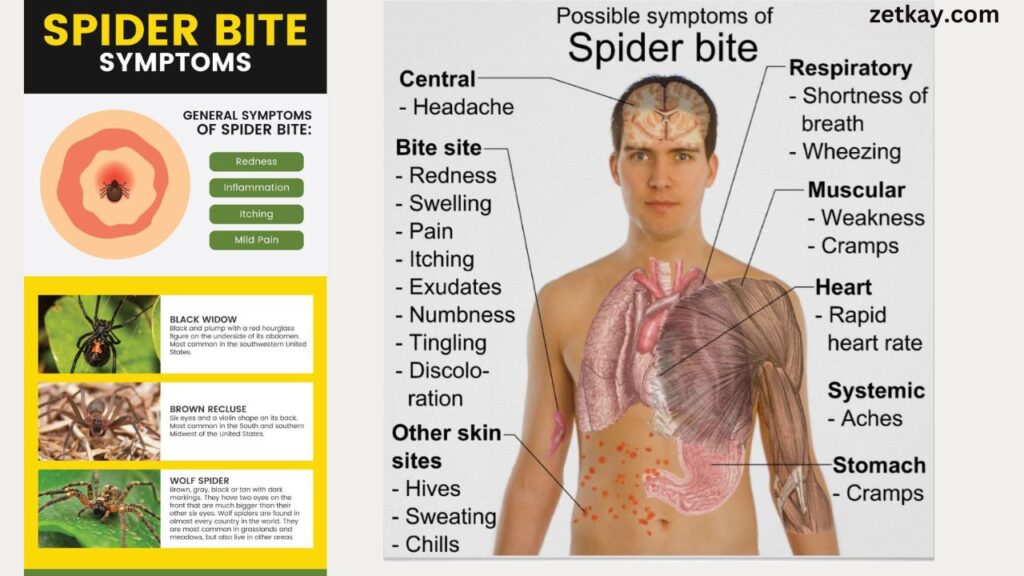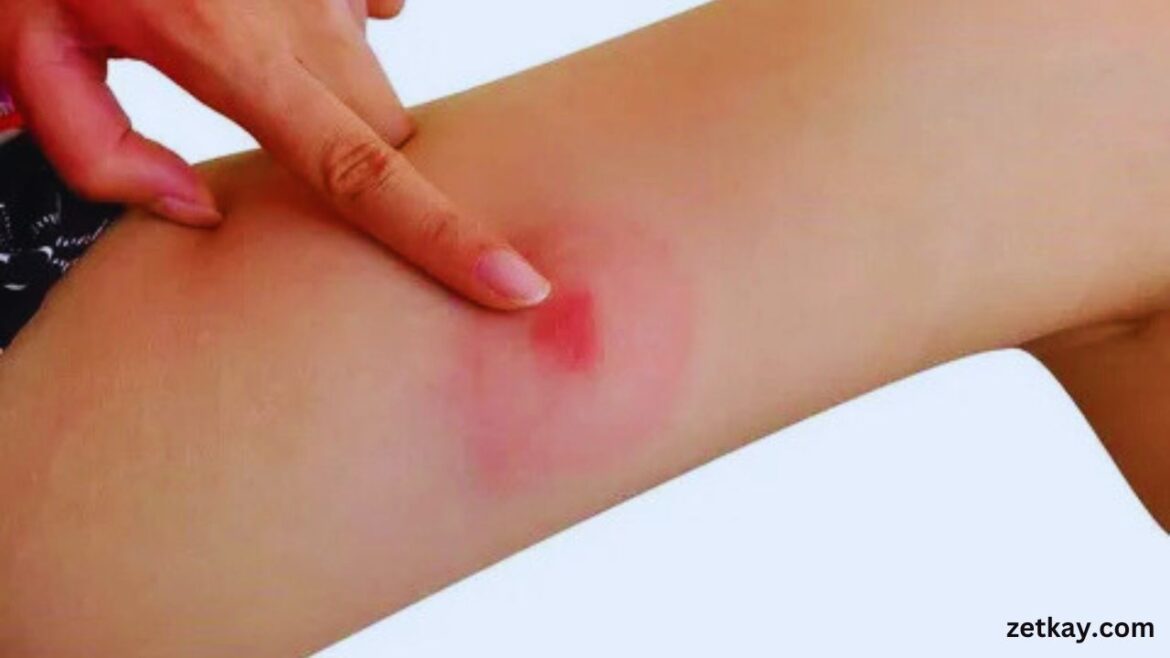Learn how to identify spider bite symptoms and the best treatments available. Discover first aid tips, medical remedies, and prevention techniques to stay safe from spider bites.
Introduction
Spider bites are an often misunderstood and sometimes alarming occurrence. While most spider bites are harmless, a few can lead to serious health issues if left untreated. The key to managing a spider bite lies in understanding its symptoms, knowing when to seek help, and how to administer proper care. From minor irritation to venomous bites that require medical attention, recognizing the difference can be life-saving.
In this comprehensive guide, we’ll walk you through everything you need to know about spider bites: the symptoms to look for, immediate first aid steps, medical treatments, and even how to prevent bites altogether. Whether you’re an outdoor enthusiast or simply looking to make your home spider-proof, this article equips you with the knowledge to stay safe and informed.
Overview
Spider bites can range from harmless irritations to serious medical conditions, depending on the spider species involved. Recognizing the symptoms and acting promptly can make all the difference in treatment. This guide covers the signs of spider bites, steps for immediate care, medical treatments, and effective prevention strategies. By understanding spider behavior and knowing how to respond, you can protect yourself and your family from potential risks.
Understanding Spider Bites
What Are Spider Bites?
Spider bites occur when a spider injects venom into human skin through its fangs. Not all spider bites are dangerous, as most spiders are harmless to humans. However, bites from certain species like black widows or brown recluses can cause severe reactions. Knowing what a spider bite is and how it impacts your body is the first step in addressing it effectively.
Common Causes of Spider Bites
Spider bites typically happen when spiders feel threatened or are accidentally disturbed. Common scenarios include encounters while gardening, reaching into dark spaces, or sleeping in areas where spiders have built webs. Spiders are naturally shy and bite humans only when provoked.
Venomous vs. Non-Venomous Spiders
Venomous spiders, such as the black widow and brown recluse, inject venom that can cause serious symptoms. Non-venomous spiders may leave behind mild irritation, resembling a mosquito bite. Differentiating between the two can help determine the severity of the situation and the required treatment.
Symptoms of Spider Bites
Early Signs to Watch Out For
Most spider bites begin with mild redness and swelling at the site of the bite. Other early symptoms may include pain, itching, and warmth around the area. These symptoms often appear within a few minutes to a few hours of the bite.

Symptoms of Venomous Spider Bites
- Black Widow Spider Bites
Black widow bites are often characterized by sharp pain at the bite site, accompanied by muscle cramps, sweating, and nausea. The venom affects the nervous system, leading to widespread pain that can last several hours. - Brown Recluse Spider Bites
Brown recluse bites may initially seem harmless but can develop into severe tissue damage. A characteristic symptom is a red, white, and blue “bullseye” appearance at the bite site. Other symptoms include fever, chills, and fatigue.
Non-Venomous Spider Bite Symptoms
Non-venomous spider bites usually cause minor irritation, with symptoms such as redness, mild swelling, and itching. These bites typically heal within a few days without medical intervention.
Read More:
Insomnia, symptoms, causes & Treatments
Diagnosing Spider Bites
When to Seek Medical Attention
You should seek medical attention if the bite worsens over time, displays signs of infection, or is accompanied by systemic symptoms like fever or difficulty breathing. Venomous bites, particularly from black widows or brown recluses, require prompt medical care.
How Doctors Identify Spider Bites
Doctors may ask about your recent activities and exposure to spiders. They will also examine the bite site for specific patterns, like the bullseye rash seen with brown recluse bites. Blood tests or imaging studies may be used for severe cases.
Key Differentiators from Other Insect Bites
Spider bites can often be mistaken for other insect bites or skin conditions. Unlike mosquito bites, spider bites may feature fang marks and localized necrosis in severe cases. Accurate diagnosis is essential for appropriate treatment.
First Aid for Spider Bites
Immediate Steps to Take
- Wash the bite area with soap and water to prevent infection.
- Apply a cold compress to reduce swelling and pain.
- Elevate the affected limb if possible.
- Avoid scratching to minimize irritation.
Do’s and Don’ts After a Bite
- Do: Use antiseptic creams to keep the area clean.
- Don’t: Attempt to suck out venom or cut into the bite area, as this can worsen the injury.
Common Missteps in Spider Bite Care
Missteps like ignoring the bite or using unproven remedies can lead to complications. Always opt for tested first-aid measures and seek professional advice if symptoms persist.
Medical Treatments for Spider Bites
Over-the-Counter Remedies
Antihistamines and pain relievers can manage mild symptoms like itching and discomfort. Hydrocortisone cream may help reduce swelling and redness.
Prescription Medications
For venomous bites, doctors may prescribe antivenom, muscle relaxants, or antibiotics. These medications help manage severe symptoms and prevent secondary infections.
Advanced Treatments for Severe Cases
Severe reactions may require hospitalization. Treatments could include intravenous fluids, surgical intervention for necrotic tissue, or oxygen therapy in rare cases.
Conclusion
Spider bites are often minor but can become dangerous in rare cases involving venomous species. Identifying the type of spider and the severity of the symptoms is crucial for determining the right course of action. Immediate first aid, coupled with medical intervention when necessary, ensures effective treatment and recovery. Remember, prevention is always better than cure—simple measures like keeping your environment clean and wearing protective clothing outdoors can significantly reduce the chances of being bitten. Stay informed, act quickly, and keep yourself safe.
FAQs
How can I tell if a spider bite is dangerous?
If the bite site develops severe pain, a bullseye rash, or necrotic tissue, or if you experience systemic symptoms like fever, difficulty breathing, or muscle cramps, it may be dangerous. Seek medical attention immediately.
Can spider bites heal on their own?
Most non-venomous spider bites heal on their own within a few days with basic care like washing, applying ice, and using over-the-counter remedies for itching and swelling.
What is the best way to prevent spider bites at home?
Keep your home free of clutter, regularly clean dark corners and crevices, and use sealed storage containers. Installing screens on windows and doors can also help keep spiders out.
Are home remedies effective for spider bites?
Some home remedies, like applying aloe vera or baking soda paste, can soothe minor bites. However, venomous bites require professional medical treatment.
Should I kill spiders to avoid bites?
While eliminating venomous spiders is understandable, most spiders are harmless and beneficial for controlling pests. Instead of killing them, consider relocating harmless species outside.
